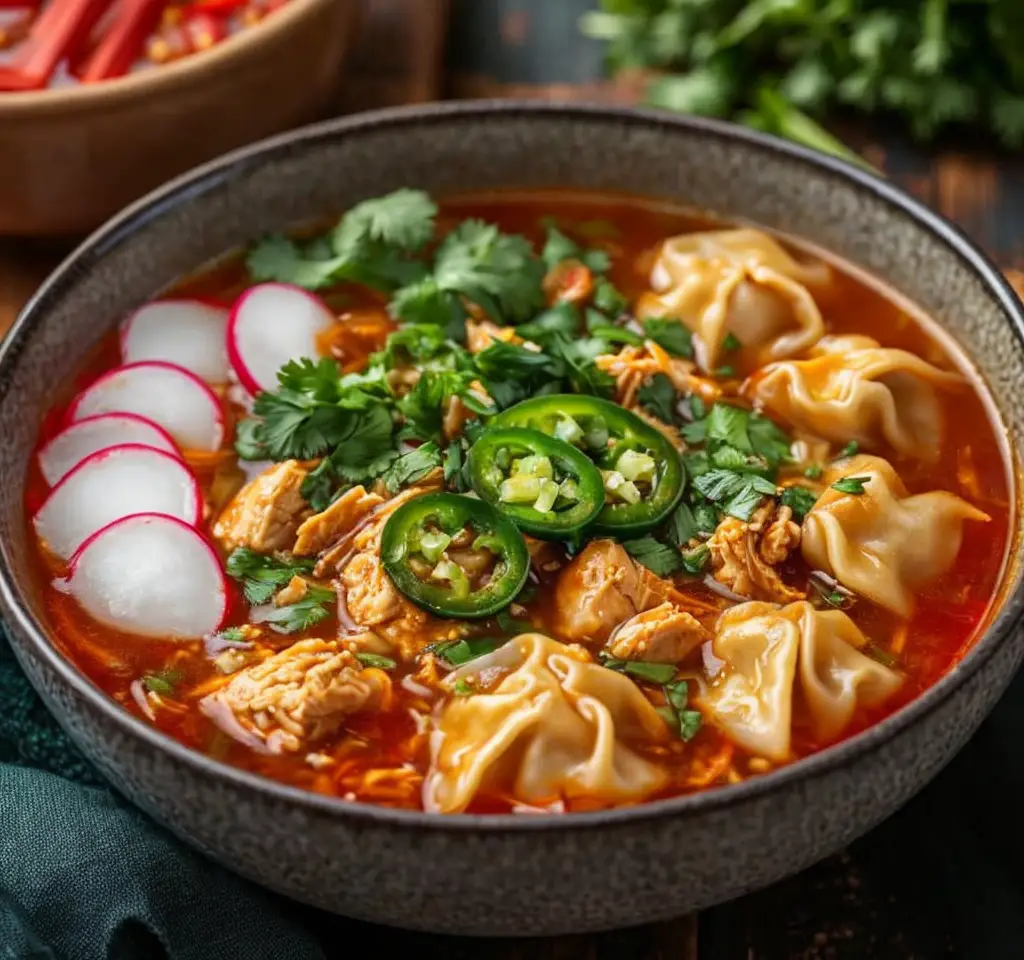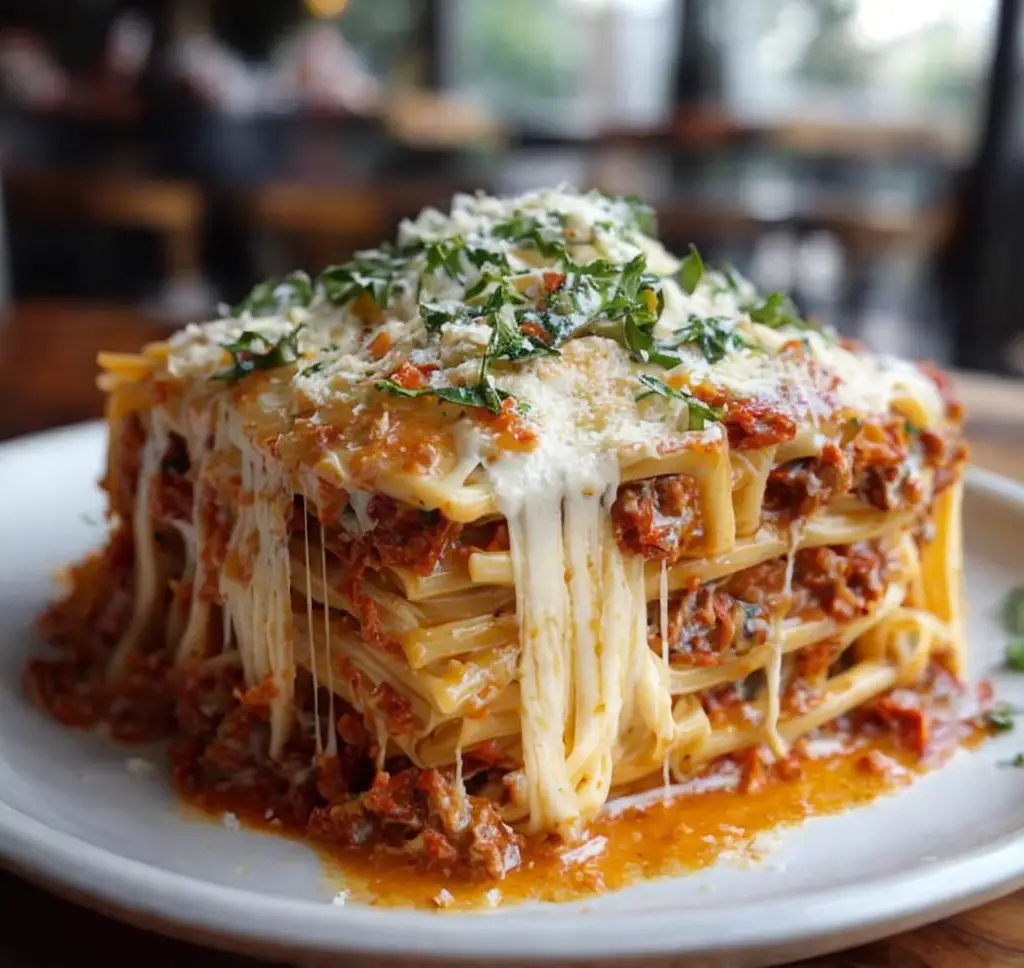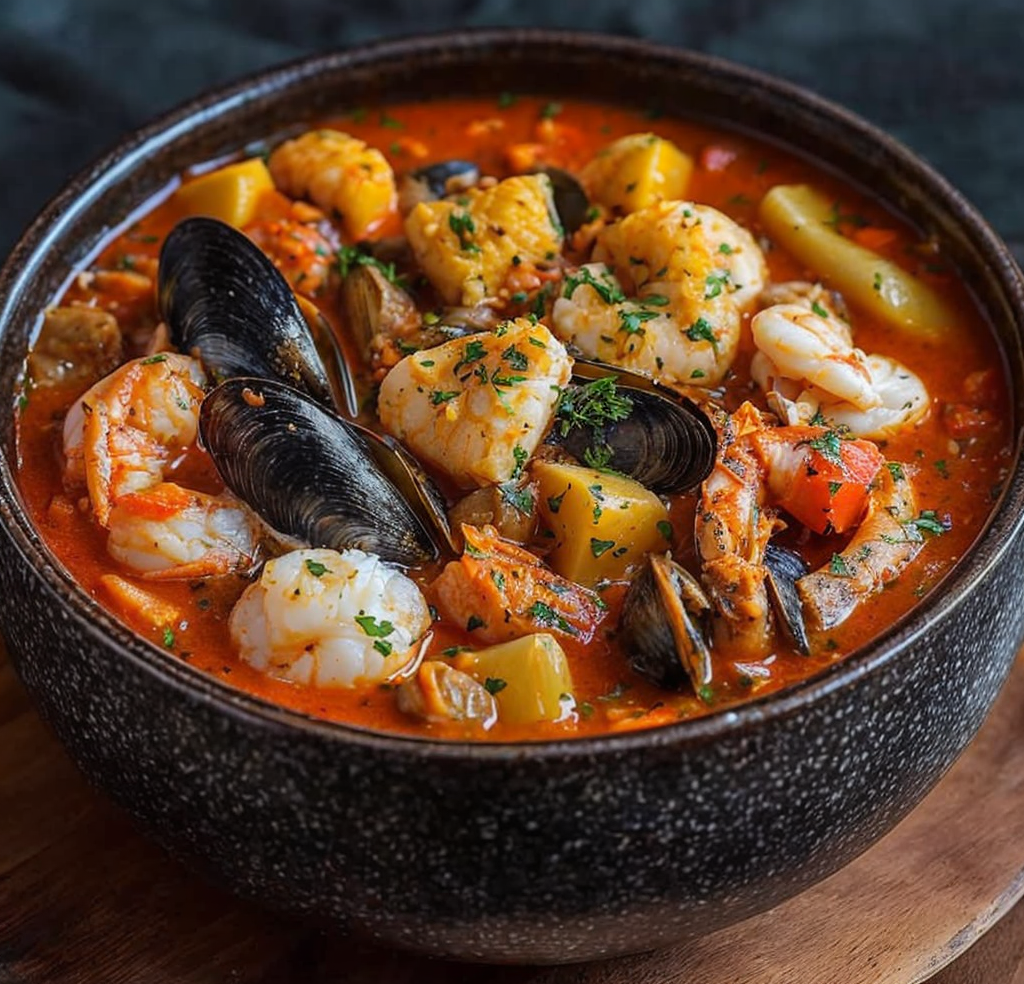Pineapple Coconut Dream Cake: A Tropical Paradise for Your Taste Buds
The Pineapple Coconut Dream Cake is a delightful dessert that transports you straight to a tropical paradise. With its luscious layer of pineapple paired with creamy coconut, this cake is perfect for any occasion. The sweet, juicy pineapple enhances the rich flavors of coconut, while a light, fluffy cake provides the ideal base, making every bite a heavenly experience. This cake not only pleases the palate but also delights the senses with its vibrant colors reminiscent of sandy beaches and palm trees.
When you cut into the Pineapple Coconut Dream Cake, the moisture seeps out, filling the room with an irresistible aroma. The combination of the sweet, tangy pineapple and the nutty profile of the coconut creates a flavor explosion that is simply unforgettable. Whether you’re celebrating a special event or just indulging in a slice after a long day, this cake offers a taste of sunshine no matter the season.
Quick Recipe Highlights
- Flavor Profile: The bright flavors of pineapple combined with the creamy sweetness of coconut create a refreshing and irresistible taste experience.
- Texture: The cake has a moist and fluffy texture, while the frosting is creamy and smooth, providing a delightful contrast.
- Aroma: Expect a tropical aroma that wafts through your kitchen, thanks to the fresh pineapple and rich coconut.
- Visual Appeal: This cake boasts a gorgeous golden hue with a garnish of toasted coconut flakes and pineapple slices, making it a stunning centerpiece for any gathering.
- Skill Level Needed: This recipe is accessible for bakers of all skill levels, making it a great choice for both novices and seasoned cooks.
- Special Equipment: A round cake pan and an electric mixer are recommended for optimal results, ensuring the cake rises beautifully.
Recipe Overview
- Difficulty Level: Although this Pineapple Coconut Dream Cake requires multiple steps, careful following of the instructions will yield a stunning cake that is well worth the effort.
- Category: This cake is perfect as a dessert or a sweet treat for brunch, making it versatile for various meal occasions.
- Cuisine: The recipe is influenced by tropical culinary traditions, especially drawing from Hawaiian flavors, which celebrate the use of pineapple and coconut.
- Cost: The ingredients are generally affordable, making this recipe a budget-friendly choice for your baking adventures.
- Season: Perfect for summer gatherings and celebrations, this cake embodies the essence of sunshine and warmth.
- Occasion: Ideal for birthdays, baby showers, and potlucks, this cake is sure to impress your guests.
Why You’ll Love This Recipe
The Pineapple Coconut Dream Cake not only delivers a fabulous taste but also an exciting texture that can awaken your senses. The combination of fluffy cake with creamy frosting and chunks of real pineapple creates an experience that feels indulgent yet refreshing. It’s a treat that can highlight any celebration, providing a delightful tropical shortcut from the everyday dessert routine.
One of the standout benefits of this recipe is its convenience. The preparation steps are straightforward, allowing anyone to bring a touch of tropical bliss to their kitchen with minimal fuss. Gathering fresh ingredients and assembling them takes no time, and the bake time allows you to focus on other tasks or simply enjoy the pleasant baking aroma wafting through your home.
Nutritiously, the inclusion of pineapple adds a dose of vitamins, while coconut provides healthy fats. Together, they not only enhance the flavor but also contribute to a more balanced treat. This cake is an invitation to indulge without the guilt, showcasing how desserts can combine taste and nutrition beautifully.
Moreover, this cake shines when it comes to social settings. Imagine serving this creation at a gathering, where its colorful appearance and tropical aroma captivate everyone. It encourages conversations around sweet memories associated with summer, vacations, and sunny beaches, making it an excellent conversation starter.
Cost-effectiveness is another asset of this recipe. With easily sourced ingredients that often fit into a standard grocery budget, you can whip up this delightful cake without breaking the bank. Plus, the satisfaction gained from creating this treat in your own kitchen adds to its appeal, making it an accessible option for all.
Historical Background and Cultural Significance
The roots of the Pineapple Coconut Dream Cake can be traced back to the tropical islands, where pineapple and coconut thrive. Both ingredients have long been primary commodities in Hawaiian culture, symbolizing abundance and hospitality. These tropical flavors have crossed cultural boundaries, becoming popular across various cuisines globally.
Culturally, the cake represents a celebration of summer, often associated with luaus and beach parties. Its creation speaks to the joy of sharing a piece of tropical indulgence with friends and family, fostering connections amidst the spirit of fun and relaxation.
Over time, the recipe has evolved, incorporating various techniques and flavor elements based on regional adaptations. Some have introduced layers of cream cheese frosting for an added tang, while others prefer lighter whipped cream variations to enhance the cake’s airy texture.
Regional variations of this cake can include different fruits or nuts, adjusted based on what is locally available or seasonally ripe. In some coastal cities, macadamia nuts might be added for a delightful crunch, showcasing how versatile and loved this cake has become in global baking traditions.
Ingredient Deep Dive
Pineapple: Pineapple brings a proprietary sweetness and a vibrant tropical flavor to the cake. Rich in vitamin C and manganese, it promotes digestion and offers antioxidant benefits. When selecting pineapple, choose fresh, firm fruits with a sweet aroma. To store, keep intact at room temperature; once cut, refrigerate in an airtight container.
Coconut: Coconut provides a delicious nutty taste that complements the pineapple perfectly. It contains healthy fats, which can contribute to better heart health. Opt for unsweetened shredded coconut for the best flavor and texture. Store it in a cool, dark place, and using it soon after purchasing will ensure maximum freshness.
Common Mistakes to Avoid
- Not properly measuring ingredients: Accuracy in measuring flour and sugar is vital for achieving the right texture in your cake.
- Using warm eggs: Ensure your eggs are at room temperature for better emulsification with the wet ingredients, resulting in a fluffier cake.
- Overmixing the batter: Overmixing can lead to a dense cake, so mix until just combined to keep it light and airy.
- Misjudging baking time: Always check your cake a few minutes before the suggested time, as ovens can vary in temperature.
- Not adjusting the recipe for altitude: If you live at a high altitude, adjustments in flour and liquid can help ensure proper baking results.
- Skipping the cooling process: Allow your cake to cool completely before frosting to prevent the frosting from melting off.
- Underestimating ingredient substitutions: Using alternatives without considering their properties can alter the final product, so make informed choices.
- Not enough pineapple: Ensure you are using sufficient pineapple for flavor; this is crucial for the cake’s tropical identity.
Essential Techniques
Whipping Egg Whites: This technique is essential for creating a light and airy cake. Start with clean, dry beaters and whip the egg whites until soft peaks form. Avoid overwhipping, which can lead to a dry texture. The goal is to create volume and support for the cake structure.
Creaming Butter and Sugar: This foundational technique cream is crucial for incorporating air into your cake batter. Begin with room-temperature butter and sugar, mixing until the color lightens and the mixture becomes fluffy. Look for a pale, creamy texture; this indicates sufficient air has been incorporated, contributing to the cake’s rise.
Pro Tips for Perfect Pineapple Coconut Dream Cake
– Use fresh, ripe pineapple for the best sweetness and flavor; canned options can lack the brightness.
– Consider toasting shredded coconut for added depth and a delightful crunch in your finished cake.
– Always preheat your oven to ensure even baking throughout.
– Let the cake layers cool completely before layering and frosting to maintain structural integrity.
– Frosting works best when the cake is chilled, making it easier to achieve a smooth finish.
– For added tropical flair, top with maraschino cherries or slices of fresh pineapple.
– Ensure all your ingredients, especially dairy and eggs, are at the same temperature before mixing for the best emulsion.
– Enhance the flavor by adding a splash of coconut extract in the batter for more coconut goodness.
Variations and Adaptations
Regional variations often feature distinct flavor profiles; consider using passion fruit or mango puree for a tropical twist. Seasonal adaptations can involve fresh berries for summer gatherings, integrating local ingredients to make each version unique. For dietary modifications, substituting gluten-free flour can cater to gluten-sensitive guests without compromising flavor.
Flavor variations could include chocolate coconut layers or lemon zest for added brightness. Texture modifications might involve creating a layer of cream cheese frosting for contrast or integrating nuts for crunch. Presentation alternatives could involve a simple dusting of powdered sugar for a classic look, or a lavish drizzle of coconut cream for a more extravagant appearance.
Serving and Presentation Guide
When plating your Pineapple Coconut Dream Cake, consider using a cake stand for elevation and drama. Garnish with toasted coconut flakes and strategically placed pineapple slices for a stunning visual. Pair with whipped cream as a side for a fluffy contrast, and serve cool for the best flavor experience.
For modern suggestions, consider serving with a tropical fruit salad or a scoop of coconut ice cream to complement the flavors. Maintain attention to portion control by slicing into equal pieces, ensuring each serving contains a delightful mix of cake, frosting, and pineapple.
Wine and Beverage Pairing
To enhance your dining experience with Pineapple Coconut Dream Cake, consider pairing it with a light and fruity wine, such as a Riesling or Moscato, which complements the tropical flavors. For a non-alcoholic option, a sparkling lemonade or ginger beer can provide refreshing effervescence.
Coffee lovers may enjoy a well-brewed vanilla latte alongside the cake, as the richness of the coffee balances out the sweetness of the dessert. Remember, when serving, it’s beneficial to keep drinks cool to balance the warmth of the baked goods.
Storage and Shelf Life
To keep your Pineapple Coconut Dream Cake fresh, store it in an airtight container at room temperature for up to three days. If you need to keep it longer, refrigeration will extend the shelf life to about a week. Always look for signs of spoilage, such as a change in texture or odors.
For freezing, slice the cake and wrap each piece tightly in plastic wrap, followed by foil. This ensures that it remains sealed and fresh, allowing for up to three months of quality storage. To reheat, let it thaw in the fridge overnight; you can revive its moisture by wrapping it in a damp paper towel during reheating.
Make Ahead Strategies
To streamline your preparation, bake and cool the cake layers one day in advance. Wrap them in plastic wrap and store in the refrigerator to lock in moisture. Frosting can also be made ahead of time; just ensure it’s stored correctly to prevent drying out.
When you’re ready to assemble, allow the layers to come to room temperature for the best spreadability. Remember that adding fresh components such as fruit or whipped cream right before serving will enhance the overall presentation and taste.
Scaling Instructions
When halving the recipe, make sure to adjust the pan size accordingly to maintain even baking times. Doubling or tripling allows for a larger gathering—just ensure you have a sufficiently big mixing bowl and ample space in your oven.
Timing modifications may be necessary; larger cakes usually require an extended baking time, while smaller batches will cook quicker. Take care to adjust based on your oven’s heat distribution for optimal results.
Nutritional Deep Dive
The Pineapple Coconut Dream Cake yields ahead in a macro breakdown of carbohydrates, primarily from sugar and flour, and healthy fats derived from coconut. Incorporating pineapple adds valuable vitamin C and dietary fiber, while the cake remains a delightful treat when enjoyed in moderation.
A closer look at micronutrients reveals potassium and magnesium present in the pineapple, alongside beneficial nutrients from coconut’s healthy fat profile. For those watching their dietary intake, it’s important to consider portion sizes to enjoy this indulgence responsibly while still benefiting from the key nutrients.
Dietary Adaptations
Making the Pineapple Coconut Dream Cake gluten-free is achievable by swapping regular flour for gluten-free flour mixes. For a dairy-free option, use coconut milk and vegan butter in your frosting for a completely dairy-free version.
These adaptations allow more individuals to enjoy this wonderful cake while tailoring it to specific dietary needs, providing a delicious alternative without sacrificing flavor or texture. Adjusting sugar content can also appeal to low-carb and keto dieters, allowing more people to indulge in this tropical dessert.
Troubleshooting Guide
If your cake turns out too dense, assess whether you overmixed the batter or added too much flour. To fix flavors that seem off-balance, consider adjusting sweetness by adding a bit of salt or an acidic element like lemon juice to elevate the taste.
Equipment challenges can arise when using an unfamiliar oven; keep a close eye on your cake, testing frequently to avoid overbaking. Ingredient substitutions like using different fats (such as oil instead of butter) can change texture; ensure that any swaps balance out with the other elements in the recipe.
Recipe Success Stories
Community feedback about the Pineapple Coconut Dream Cake highlights its ability to create joyful memories and satisfy a wide range of taste preferences. Many readers love sharing their variation successes, using different fruit combinations or unique frostings that offer creative alternatives.
Adaptation stories often inspire others to experiment with this recipe, leading to newfound family favorites during the summer months. Recipe reviews showcase how this cake has become a staple at festive gatherings, with many sharing photography tips that highlight its beautiful layers and textures.
Frequently Asked Questions
A: Yes, you can easily swap the flour for a gluten-free blend, ensuring the cake remains equally delightful.
Q: Can I use canned pineapple instead of fresh?
A: Canned pineapple can be used, but ensure it’s well-drained to prevent excess moisture in the cake.
Q: How do I store leftovers?
A: Store leftover cake in an airtight container at room temperature for up to three days or refrigerate for longer shelf life.
Q: Can I freeze the cake?
A: Yes, wrap individual slices tightly in plastic wrap and foil for up to three months in the freezer.
Q: What can I use instead of eggs?
A: Replace each egg with a quarter cup of unsweetened applesauce or a flaxseed meal equivalent for a vegan option.
Q: Can I add nuts to the recipe?
A: Absolutely! Chopped macadamia or walnuts can be added for texture and flavor.
Q: Why is my cake dense?
A: Density can result from overmixing the batter or using the wrong flour measurement, so ensure you mix just until combined and measure accurately.
Q: What frosting works best with this cake?
A: Cream cheese frosting pairs beautifully, while whipped cream can add a light touch to the finished cake.
Q: How long does this cake last in the fridge?
A: When properly stored, it can last up to one week in the refrigerator without losing quality.
Q: Can I bake this cake in a different pan type?
A: Yes, baking in a bundt pan or cupcakes is feasible, but baking times will vary, so monitor the cake carefully.
Additional Resources
For those eager to explore further, consider trying related recipes such as tropical fruit salads or coconut macaroons. Technique guides focusing on mixing methods and frosting techniques can be extremely useful as well.
Ingredient information specific to fruits and nuts can add to your expertise when making future desserts. Additionally, equipment recommendations for cake baking will assist beginners in creating perfect cakes every time, along with seasonal variations that inspire creativity in your baking endeavors.
Join the Conversation
We encourage you to share your baking experiences with Pineapple Coconut Dream Cake on social media. Tagging us with your photos helps build a community of dessert lovers eager to swap tips and celebrate creativity in the kitchen. Your recipe reviews can not only inspire others but also refine what makes this treat truly special.
Feel free to contribute your unique variations, along with any suggestions based on your experience. We’d love to see how this tropical delight comes to life in your home and brings joy to your table!
The Recipe
Pineapple Coconut Dream Cake
Serves: 12 servings
Prep Time: 30 mins
Cook Time: 45 mins
Total Time: 1 hr 15 mins
Kitchen Equipment Needed
- Round cake pans (2)
- Mixing bowl
- Electric mixer
- Rubber spatula
- Cooling rack
Ingredients
- 2 cups all-purpose flour
- 1 ½ cups granulated sugar
- 1 cup coconut milk
- 1 cup crushed pineapple (drained)
- ½ cup unsweetened shredded coconut
- ½ cup unsalted butter, softened
- 3 large eggs
- 1 ½ tsp baking powder
- 1 tsp vanilla extract
- ½ tsp salt
Directions
- Preheat the oven to 350°F (175°C) and grease the cake pans.
- In a mixing bowl, cream butter and sugar together until light and fluffy.
- Add eggs one at a time, mixing well after each addition. Stir in the vanilla.
- In a separate bowl, whisk together the flour, baking powder, and salt.
- Combine the dry ingredients with the wet mixture, alternating with the coconut milk, until blended.
- Fold in the crushed pineapple and shredded coconut gently.
- Divide the batter evenly into the prepared cake pans and smooth the tops.
- Bake for 30-35 minutes or until a toothpick comes out clean.
- Let the cakes cool in pans for 10 minutes before transferring to a wire rack.
- Once cooled, frost with your choice of frosting and decorate as desired.
Recipe Notes
- For extra flavor, consider adding a splash of coconut extract to the batter.
- Ensure all ingredients are at room temperature before starting for optimal mixing.
- This cake can be made a day in advance; wrap the layers in plastic wrap after cooling to maintain moisture.




